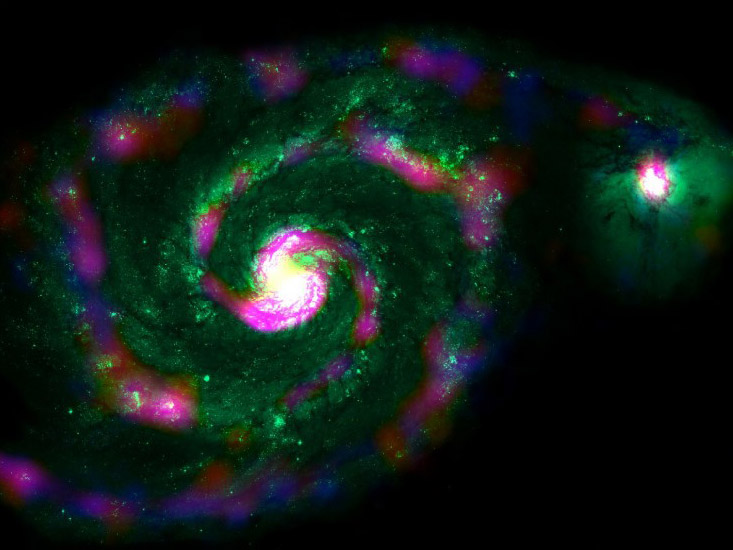UK helps develops pioneering space camera
10,000 pixel camera detects coldest materials in universe

Scientists from a number of UK universities have helped to develop the SCUBA-2, a powerful camera capable of mapping the coldest parts of space which were previously undetectable.
The SCUBA-2 is the largest "sub-millimetre" camera to be built, and was created in collaboration with universities in Edinburgh, Cardiff, British Columbia and Waterloo along with the US National Institute of Standards and Technology and the Joint Astronomy Centre.
Housed on board the James Clerk Maxwell Telescope (JCMT) on Mauna Kea, Hawaii, the "submillimetre" refers to the submillimetre waveband between the far-infrared and microwave wavebands that the telescope observes, rather than the size of the camera itself.
Space beginnings
Far more sensitive than its predecessor, SCUBA-2, is capable of mapping areas of the sky faster than ever before, providing information about the early life of stars, planets and galaxies.
The detectors inside the SCUBA-2 are cooled to just 0.1 degree above absolute zero (-273.5 degrees), to allow it to detect the extremely low energy radiation in the submillimeter waveband which is emitted by the very cold material associated with the earliest evolutionary stages of galaxies, stars and planets.
When looking at the stars with the naked eye, only the light emitted from the visible part of the spectrum is seen. Many galaxies, including the Milky Way, contain huge amounts of cold dust that absorbs the visible light, making dusty regions look black when seen through a telescope. The new camera changes that.
The SCUBA-2 is a replacement for the original SCUBA camera and contains more than 10,000 superconducting sensors, weighs 4.5 tonnes and measures 3m high and and 2.3 metres wide. The camera boasts 10,000 pixels and will be able to map the sky up to 1,000 times faster than its predecessor.
Get daily insight, inspiration and deals in your inbox
Sign up for breaking news, reviews, opinion, top tech deals, and more.
Via GizMag and WalesOnline
Amy has been writing about cameras, photography and associated tech since 2009. Amy was once part of the photography testing team for Future Publishing working across TechRadar, Digital Camera, PhotoPlus, N Photo and Photography Week. For her photography, she has won awards and has been exhibited. She often partakes in unusual projects - including one intense year where she used a different camera every single day. Amy is currently the Features Editor at Amateur Photographer magazine, and in her increasingly little spare time works across a number of high-profile publications including Wired, Stuff, Digital Camera World, Expert Reviews, and just a little off-tangent, PetsRadar.
